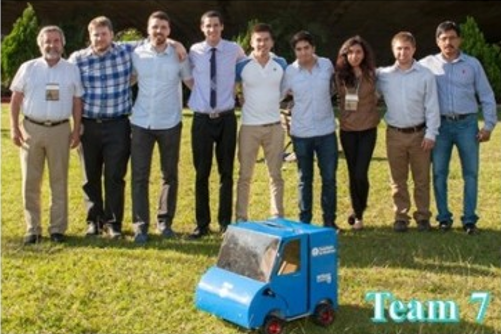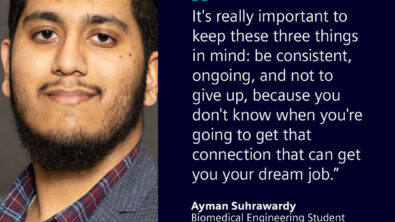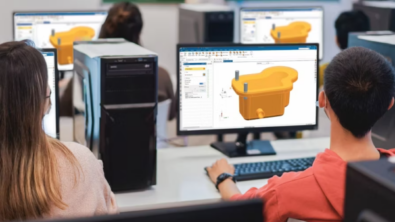PACE students learn how to use global communication skills in real-world competition

Communication in companies has always been important, however, in recent years it has become imperative that communication is a top priority, as businesses have expanded across the globe. Employees may be working with colleagues in different cities, states, countries, and even continents. No longer are the people working on a project together in the same office. Instead, they are separated by time zones and oceans.
PACE has been at the forefront of transforming undergraduate design and engineering education. One of the teams competing to develop a reconfigurable and shareable use vehicle realized how important communication is during the first year of the competition.

Team 7 has students from five universities from across the world including Georgia Tech, McMaster University, University of Toronto, University of Cincinnati, and ITESM-CEM in Mexico, all working on their product, Jolt. With dozens of students at these universities needing to communicate to reach a common goal, things did not always go smoothly.
Students from McMaster University elaborated on the struggles they encountered during the first year of the competition, “A lack of a clear product direction, stemming from too many ideas that were less than optimally organized led to a less than optimal product. Our team had the talent to deliver a great product, we lacked the organization to make that a reality.”
However, even though the team encountered some issues during year one, they didn’t give up. They reevaluated their situation and identified ways to improve in the future. The team discussed how they went about implementing change for the better. They worked to solve their issues by, “revising the team structure and redirecting efforts to focus on clear and consistent communication led us to stay on track to complete our goal. With time constraints being so prevalent, project milestones were defined at the beginning of year two, with weekly international meetings involving all team member universities being a must.”
The changes made allowed the team to get back on track and give an impressive presentation to the judges, participants, and industry representatives during the 2016 PACE Global Annual Forum at the University of Cincinnati. They were rated to be the most improved team.
The team also attributed their turnaround to the software they used, “Our performance at the PACE forum was due in no small part to the many applications designed to help engineer better products. All of us had taken coursework in NX. Tecnomatix was also indispensable in understanding the manufacturability of our vehicle from a commercial and process planning proposition.”
Real-world competitions, such as PACE, allow students an opportunity to work on solutions to issues that exist outside of a classroom. Team 7’s favorite part about PACE was that, “PACE provided a project base that allows us to learn industry software, conceptualize new ideas and innovate as engineers with others around the world, providing a real link to an industry not always attainable by university students.”
Siemens supports programs like PACE to give students the chance to develop and improve their technical engineering skills while collaborating with other students and professors, essentially simulating what it is like to work in industry. Team 7 is a perfect example of how companies work in the real world. Issues arise, solutions are created, and eventually, with a lot of hard work and dedication, a product is produced.
Learn more about all of the teams involved in PACE as well as industry partners that make the program possible.


